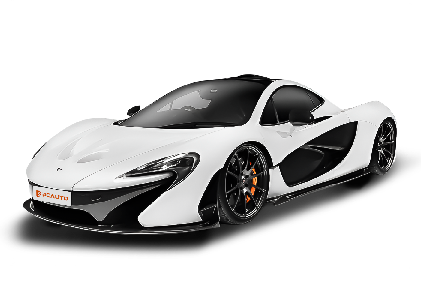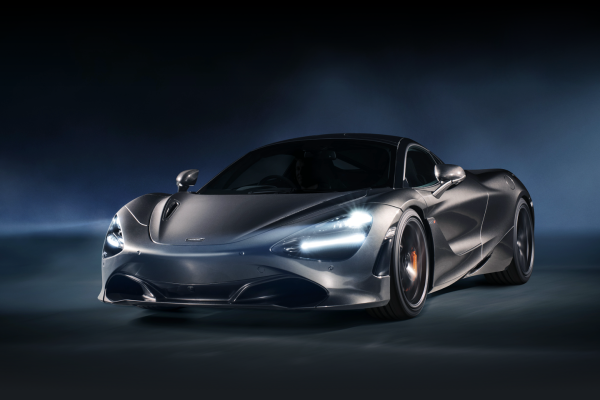Q
Is McLaren P1 a supercar?
P1 is a supercar. It possesses many typical features of a supercar such as outstanding performance, advanced technology, high price, and distinctive design. In terms of power, P1 has a powerful engine output, which can bring a high-speed driving experience. Regarding the design, it also incorporates the principles of aerodynamics, achieving efficient airflow management to enhance the stability and handling of the vehicle. Overall, P1 is undoubtedly a supercar.
Special Disclaimer: This content is published by users and does not represent the views or position of PCauto.
Related Q&A
Q
When was McLaren P1 released?
The McLaren P1 officially debuted in 2012. It is a supercar with exceptional performance and innovative design, garnering much attention in the automobile industry.
Q
When was the McLaren P1 released?
The McLaren P1 was officially released in 2012. It is a representative supercar, renowned for its excellent performance and innovative design. In the car market of Malaysia, such supercars are relatively rare, but still attract the attention and pursuit of many car enthusiasts.
Q
When was the McLaren P1 made?
The McLaren P1 debuted in 2012 and began mass production in 2013. It is a supercar with exceptional performance and innovative design.
Q
How fast is McLaren P1?
The top speed of the McLaren P1 can vary due to various factors. Generally speaking, its maximum speed can reach about 350 kilometers per hour. However, actual speeds may be influenced by road conditions, driving conditions, and vehicle tuning, among other factors. Such top speed is usually hard to reach on the road conditions in Malaysia, and driving at excessive speeds is illegal and dangerous.
Q
How much horsepower does a McLaren P1 have?
The horsepower of the McLaren P1 is typically around 903. This supercar performs excellently and is extremely powerful, making it one of the outstanding representatives in the automotive field.
Q
What engine does McLaren P1 have?
The McLaren P1 is equipped with a 3.8-liter twin-turbocharged V8 petrol engine, along with an electric motor that makes up a hybrid power system. This power combination gives the McLaren P1 an exceptionally impressive performance.
Q
How much is McLaren P1?
The price of the 2023 McLaren P1 is set at 7.078 million RM.
Q
Which car is the world's safest?
It's difficult to pinpoint exactly which car is the safest in the world when it comes to automotive safety. However, some brands and models have consistently performed well in terms of safety. For example, the Volvo XC90 is renowned for its strong safety features and advanced safety technologies, including a high-strength body structure, numerous airbags, and active braking systems. In addition, the Mercedes-Benz S-Class offers excellent safety performance, with a series of intelligent driver assistance systems and collision protection devices. However, the safety of a car depends not only on the vehicle itself, but also on the driver's driving habits and road conditions.
Q
Can a car reach speeds of 400 miles per hour?
Ordinary mass-produced cars typically cannot reach speeds of 400 mph. The top speed of most cars on the market ranges from 120 to 200 mph. Even high-performance supercars, such as the Bugatti Chiron and Koenigsegg Jesko, have top speeds far below 400 mph. Moreover, Malaysia's road conditions and traffic regulations also limit the speeds at which vehicles can travel.
Q
Which car is the fastest in the world?
Currently widely regarded as one of the fastest production cars in the world, the Bugatti Chiron Super Sport 300+ boasts a top speed exceeding 300 miles per hour. However, in Malaysia, the high-speed capabilities of supercars are often hampered by road conditions and regulatory restrictions. Among the high-performance models commonly seen locally, cars like the Ferrari 488 Pista and Lamborghini Huracan Performante exhibit impressive speed characteristics. Nevertheless, a vehicle's speed is influenced not only by its model but also by factors such as road conditions and driving skills.
Latest Q&A
Q
How much is a new Toyota Yaris 2025?
The all-new 2025 Toyota Yaris is expected to hit Malaysian showrooms with a price tag ranging from RM 70,000 to RM 90,000, though the final figure will depend on the trim level and any optional extras you tick. The base model will likely stick with the tried-and-tested 1.5L naturally aspirated engine paired with a CVT gearbox, while higher-spec variants should come loaded with more safety tech, including the Toyota Safety Sense suite – think pre-collision warning and lane-keeping assist, for starters.
In the local B-segment hatchback scene, the Yaris has always been a hit thanks to its fuel efficiency, reliability, and nimble handling. What sets it apart from rivals like the Honda City Hatchback or Nissan Almera? A sportier exterior design that gives it a bit more attitude.
But hey, don’t forget to factor in extra costs like road tax, insurance, and registration fees when budgeting – those can add up. Your best bet? Swing by an authorized Toyota dealer to check out the latest promos. Toyota Malaysia often runs deals like low-interest financing or free service packages, which are definitely worth asking about.
Oh, and keep an eye out for the 2025 model’s upgraded infotainment system – rumor has it wireless Apple CarPlay and Android Auto might finally make the cut, making your daily drive that much more convenient.
Q
How much horsepower does a 2025 Toyota Yaris have?
Toyota hasn't officially spilled the beans on the exact horsepower figures for the 2025 Yaris in Malaysia just yet. But if we take a peek at the current model's powertrain setup, it's a safe bet we'll still see the 1.5-liter four-cylinder naturally aspirated engine making a return. We're probably looking at around 106 to 110 horsepower, paired with that trusty CVT gearbox – perfect for zipping around the city and keeping fuel costs in check.
Now, if they decide to bring in the GR Sport performance trim, that's where things could get interesting. Word on the street is it might pack a punch with a 1.6-liter turbocharged engine, potentially cranking out over 200 horsepower. But hey, don't hold me to that until Toyota Malaysia makes it official, right?
Here's the thing though – horsepower isn't the be-all and end-all when it comes to a car's performance. Torque delivery, how light the body is (thanks to the TNGA platform the Yaris uses), and how efficient the transmission is all play a huge role too.
So, for Malaysian buyers, it really boils down to what you need. If you're mostly using it for daily commuting, the standard Yaris with its focus on fuel efficiency is going to be the practical choice. But if you crave a bit more driving excitement, keep an eye out for any news on that sportier variant they might bring in later.
Also, let's not forget Malaysia's hot and humid climate, which can really test an engine's cooling system and a gearbox's durability. Regular maintenance is key to keeping that powertrain running in tip-top shape.
Q
What kind of engine is in the Toyota Yaris GR 2025?
Under the hood of the 2025 Toyota Yaris GR lies a 1.6-liter three-cylinder turbocharged engine, a powerplant renowned for its impressive output and efficiency. Cranking out a solid 257 horsepower and a healthy 360 Nm of torque, it pairs with a slick 6-speed manual gearbox or an optional automatic, delivering a genuinely engaging driving experience that enthusiasts crave.
This engine isn't just about raw power, though. It's packed with advanced turbocharging tech and direct injection, which not only boosts performance but also keeps fuel economy in check – a real plus for Malaysia's diverse driving conditions. Whether you're navigating busy city streets during the daily commute or carving up twisty mountain roads on the weekends, this little hot hatch handles it all with confidence.
And let's not forget the GR-Four all-wheel-drive system. It's a game-changer, significantly upping the car's grip and stability, especially when the rain starts to pour and the roads get slippery. For Malaysian petrolheads, the Yaris GR isn't just another peppy hatchback; it's a labor of love from Toyota's Gazoo Racing division, a testament to the brand's deep-seated expertise in crafting thrilling, sporty machines.
Sure, there are other players in the hot hatch segment, each with its own set of strengths. But if you're after a package that balances performance, everyday usability, and Toyota's legendary reliability, the Yaris GR is definitely one that should be high on your shortlist.
Q
Does the 2025 BMW X3 require premium gas?
The 2025 BMW X3 is officially recommended to use RON 95 or higher gasoline in the Malaysian market. However, for optimal performance, it's advisable to go with RON 97 or higher premium fuel. Why? Because high-octane gasoline better suits the high compression ratio design of its turbocharged engine, reducing the risk of knocking and optimizing power delivery.
In Malaysia, gasoline grades are RON 95 and RON 97, with RON 97 being the premium option. While it does cost a bit more at the pump, it offers better combustion efficiency. Sticking with it long-term can help minimize carbon buildup and potentially extend the engine's lifespan.
Now, here's the thing: if you have to temporarily fill up with RON 95, it won't immediately damage the engine. Modern cars, including this Bimmer, are equipped with knock sensors that can automatically adjust ignition timing. But, consistently using lower-octane fuel might lead to reduced performance and increased fuel consumption over time.
For a brand like BMW, which prides itself on driving dynamics, following the manufacturer's fuel recommendations is key to keeping the vehicle performing at its peak. The good news is, RON 97 is widely available at most Malaysian petrol stations, so owners shouldn't have any trouble finding it when they need to refuel.
Q
What colors are the BMW 3 Series 2025?
The 2025 BMW 3 Series has entered the Malaysian market with a solid color palette to suit different tastes. There are timeless classic colors: Black Sapphire metallic, Alpine White solid, and Brooklyn Grey metallic. For those wanting a bit more flair, there's the eye-catching Arctic Race Blue metallic. And if you're really looking to stand out, keep an eye out for potential special finishes like matte or exclusive metallic options, BMW usually has something extra for those who want to personalize their ride.
Now, when picking your 3 Series hue here in Malaysia, personal preference obviously leads the way, but our local climate is worth a thought too. Lighter shades tend to be more practical in the heat – they are less likely to show dust and help reflect some of that harsh sunlight, which can make a difference when you step into a parked car. Darker colors, though, exude that classic, premium dignified and luxurious vibe that BMW does so well.
One thing BMW doesn't skimp on is paint quality. They use high-tech stuff like multi-layer application and nano-coatings. It's not just about making the car look stunning – these paints are tough, too. Expect good scratch resistance and corrosion protection, which is pretty handy given our frequent rain and humid conditions.
If you're still on the fence about which color to go for, it's advisable to head down to your local authorized BMW dealership. Checking out the actual color swatches or, even better, seeing the colors on a real car under different lighting is the way to go. Trust me, colors can look surprisingly different in the showroom versus outside in the sun.
View More


















Pros
Cons